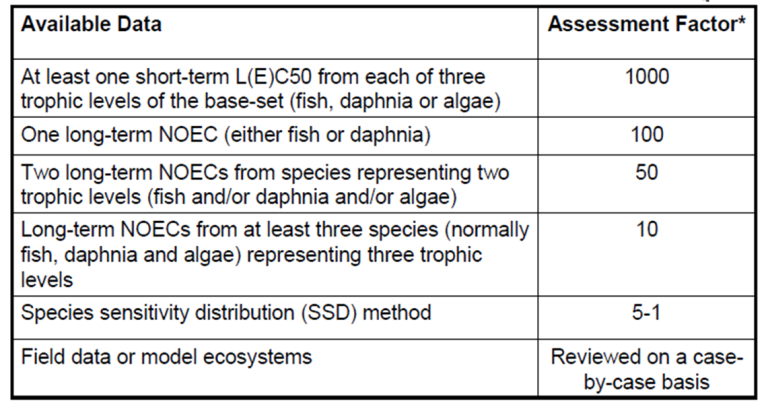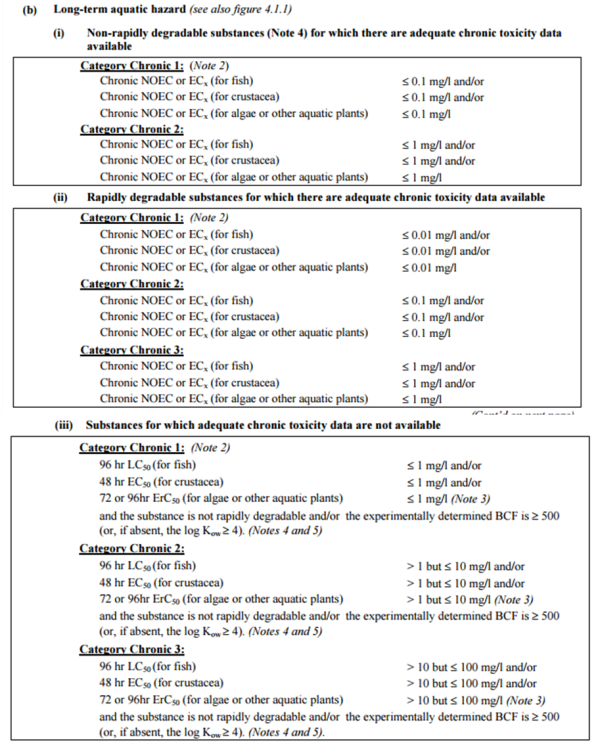How to Use EbC50, ErC50, ErC10 and NOEC Data from Algae Growth Inhibition Test
Little Pro on 2017-03-01
Typical 72h-96h algae growth inhibition test can provide both acute and chronic endpoints due to the short generation times of algae. 4 endpoints may be reported from the study: ErC50, EbC50, ErC10 and NOEC. In this article, we will give their definition and demonstrate how to use them for hazard classification and environmental risk assessment.
Definition of ErC50, EbC50, ErC10 and NOEC
- ErC50 (unit: mg/L): the concentration of test substance which results in a 50 percent reduction in growth rate (ErC50) relative to the control within 72hrs exposure. It is regarded as acute endpoint.
- EbC50 (unit: mg/L): the concentration of test substance which results in a 50 percent reduction in biomass growth(EbC50) relative to the control within 72hrs exposure.It is regarded as acute endpoint.
- ErC10 (unit: mg/L): the concentration of test substance which results in a 10 percent reduction in growth rate (ErC10) relative to the control within 72hrs exposure. It can be regarded as chronic endpoint.
- NOEC (unit: mg/L): no-observed-effect-cencentration. It is usually the highest test concentration at which no toxic effects are observed. It can also be regarded as chronic endpoint.
How to Use Algae Study Results for GHS Classification
Under GHS, only algae ErC50 is used for acute aquatic hazard classification. ErC10 or NOEC can be used for chronic aquatic hazard classification (see picture below). ECHA's guidance part 7b specifically mentioned that "Often both acute growth rate EC50 (ErC50) and biomass (EbC50) endpoints are reported however the latter should not be used. The reason is that direct use of the biomass concentration without logarithmic transformation cannot be applied to an analysis of results from a system in exponential growth."

Algae Study Results and Environmental Risk Assessment
Under REACH, both ErC50, ErC10 or NOECs obtained from algae study can be used to calculate Predicted No Effect concentrations(PNEC) for the aquatic environment. The Predicted No Effect Concentration or PNEC is the concentration of a substance in any environment below which adverse effects will most likely not occur during long term or short term exposure. The table below summarizes how to obtain PNEC values by dividing ExC50 or NOEC by various assessment factors.

Note: If only an EbC50 is reported and no primary data are available, it should be considered to perform a new algae study to obtain a valid ErC50 and NOEC or ErC10 especially if algae are the most relevant species for the effects assessment.
References
- ECHA guidance on information requirements part 7b
- Derivation and Use of Environmental Quality and Human Health Standards for Chemical Substances in Water and Soil
Having Questions?
We do not provide consultancy services. If you have questions or need any help, please contact our sponsor. You may also find an expert in CSP business directory below. If you are a consultant, you may get yourself listed in CSP business directory (free) or sponsor this page to leave your contact info on this page..

Tags: Topics - CRA, Environmental Risk Assessment
